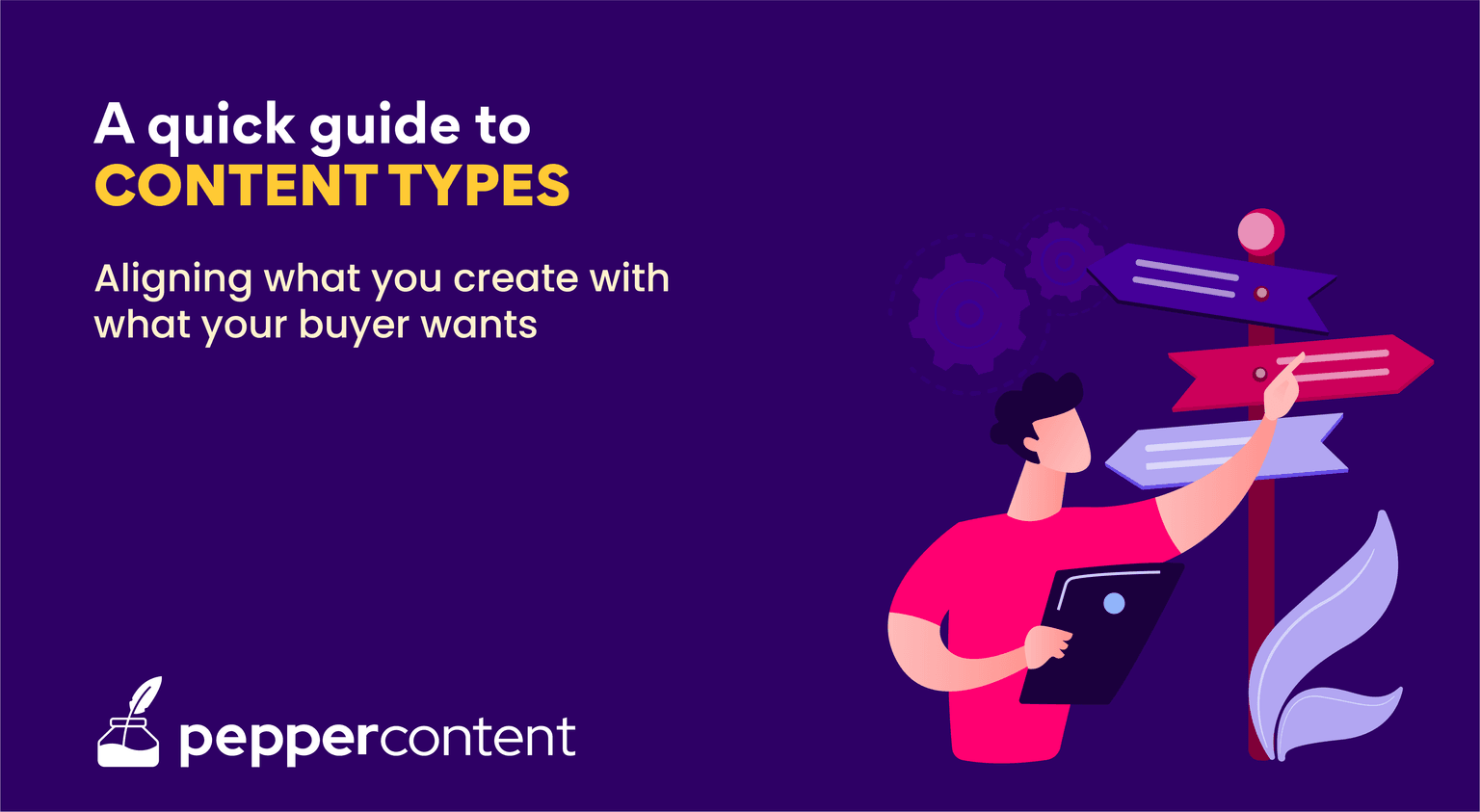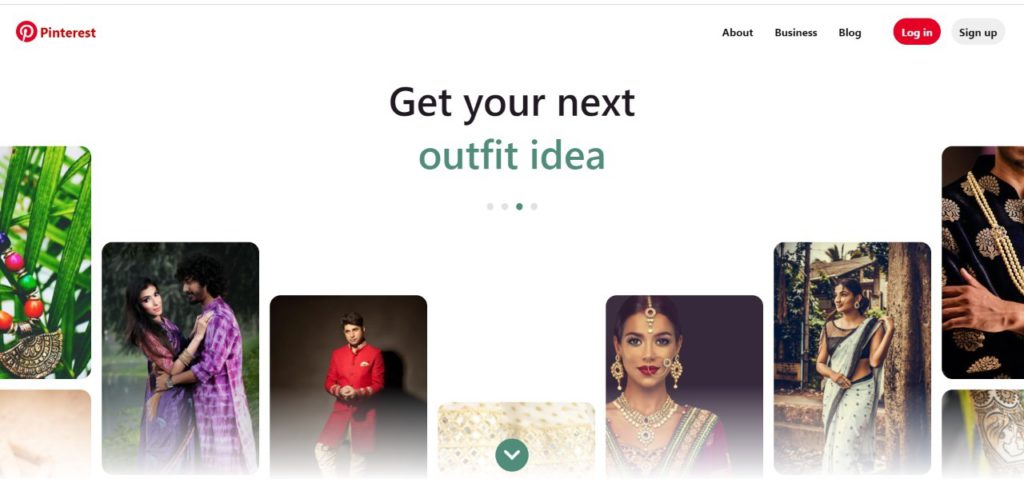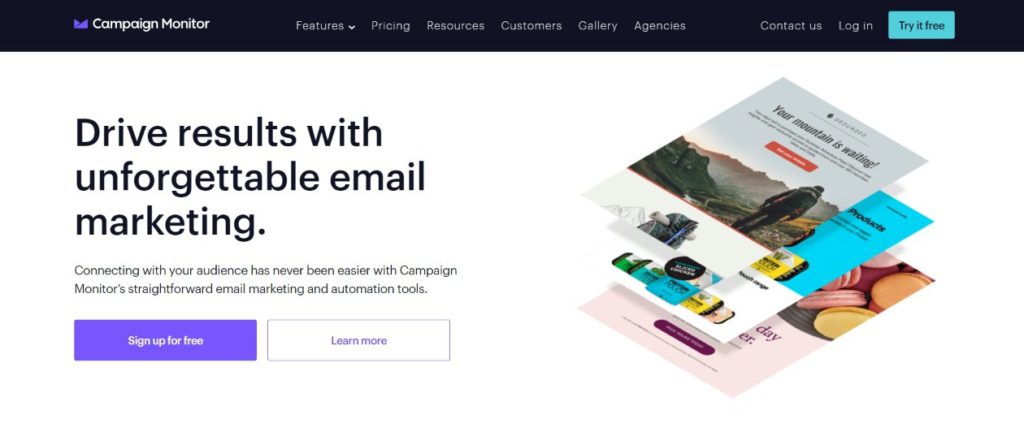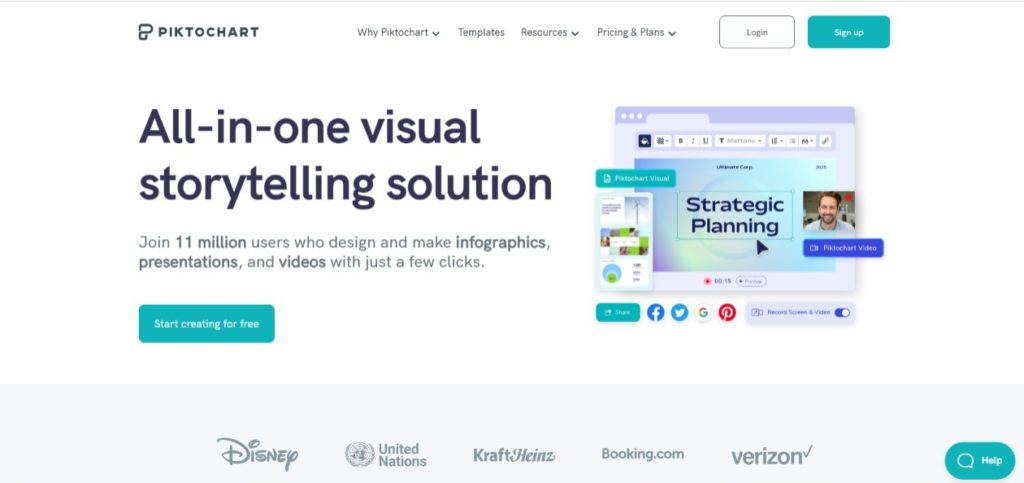Content Types: Aligning What You Create with What Your Buyer Wants

Table of Contents
1. Different types of content
- Blogs
- Email content
- Ebooks and guides
- Webinars
- Infographics
- Long-form articles
- White papers
- Videos
- Podcasts
- Case studies
- User-generated content
- Memes
- How-to guides
- Influencers
- Checklists
- Interviews
- Quizzes
- Story-telling
- External product reviews
2. Basics of the marketing funnel
- Top of the Funnel
- Middle of the Funnel
- Bottom of the Funnel
3. Creating a buyer persona
4. Mapping content with buyer persona
- Awareness
- Consideration
- Decision
5. Key Takeaways
6. Conclusion
7. FAQs
Marketing mastermind Seth Godin famously said: “People do not buy goods and services; they buy relationships, stories, and the magic.” The use of powerful content and the right messaging can take you from a company to a brand.
Various types of content marketing options help you align with your user and help them recognize and relate to your brand. Here is a quick overview:
Different types of content
Content can be in many forms and each of its forms can serve a distinct purpose for the brand and the customer in their buying journey. Here are some most frequently used content types:
1. Blogs
Blogs are the oldest and most widely used type of content. They help spread information while improving the search engine visibility of your brand. There are many websites that publish regular and guest blogs.
Example: Microsoft publishes blogs about tech events, company’s achievements, environmental issues, etc. Design Milk publishes blogs about architecture, interiors, technology, etc.
2. Social media content
This content type is almost synonymous with digital content. It involves creating or curating content on social media such as images, posts, videos, etc.
Example:

3. Email content
An effective way to reach your user; it is used as both promotional emails or newsletters.
Example: E-commerce brands send emails to consumers about offers, sale,s and upcoming events. Many firms also send company newsletters.

4. Ebooks and guides
These are larger, well-researched content pieces that aim at educating or informing the users.
Example: LinkedIn published an ebook about its own approach to marketing. The landing page provided a series of content marketing tips and stats on LinkedIn users.
5. Webinars
These are virtual events used to draw the interest of the end-user by sharing information.
Example: Webinars are commonly used by training institutes to connect students with industry experts and to conduct an interactive online sessions.
6. Infographics
A popular form of content that provides a visual representation of facts, data, and information.
Example: Educators and trainers utilize infographics to make content memorable for students and employees. Companies use infographics to monitor their sales goal progress.

7. Long-form articles
Long-form articles are typically over 1500 words and can also contain around 5000 to 20000 words. Blogging has become one of the popular strategies used by marketers to drive traffic. Customers now demand in-depth knowledge about products.
Users want to be assured that the product offers genuine value. Long-form articles are bulky articles that provide more comprehensive information on a topic. They have a chance to rank higher for specific keywords because of their sheer volume.
Example: Complete guides on a topic pertaining to a specific industry or niche.
8. White papers
A white paper is a powerful sales and marketing tool. It is similar to a long-form article and is more research-based. White papers solve the customer’s problem. They educate and persuade the users without being heavily promotional. White papers are common in industries such as finance, technology, and healthcare. A white paper is usually designed as a downloadable pdf, you can also publish white papers in the form of interactive web-based content.
Example: Summaries of statistics and useful information about a particular field or industry.
9. Videos
Videos are created to promote and share consistent and relevant content to your targeted group to pique their interest and generate genuine leads. Videos can be a couple of minutes or hours long. They educate the customers about your products and services and can be quite entertaining when coupled with humor. They help your customers to understand your products better.
Example: Facebook Live Video allows the consumers to view unedited forms of the content your business wants to promote.
10. Podcasts
Podcasts are pre-recorded audio programs that are published on a company’s website or social media pages. They are versatile and informative. There are many hosting platforms for podcasts. This content format allows you to expand your brand awareness on multiple platforms providing greater brand visibility and increased website traffic. Listeners can enjoy podcasts from anywhere; while commuting from the office to home, or even while driving. Apple podcasts host around a million podcasts annually. Google podcasts, Buzzsprout, and Resonance are some of the popular hosting platforms today.
Example: Nonfiction narrative podcasts presented by journalists provide insightful information on specific social issues.
11. Case studies
A case study is usually a testimonial or a review. Case studies highlight the achievement of the company, the problems that the company has solved for the users, and the general improvement in performance. Case studies educate the customer about real-life scenarios where your product was useful. They may include downloadable pdfs, videos, and infographics.
Example: Case studies to show how HubSpot improved Happy Marketer’s leads by 200%.
12. User-generated content
Content today is usually created by users, rather than just brands. Consumers view user-generated content as trustworthy content compared to content created by brands. According to Neilson Consumer Trust Index, 92% of the users trust organic, user-generated content more than traditional advertising because brands do not pay for user-generated content. It is unbiased and created by the consumers because they loved the product.
Example: Customer reviews of your products. This can be in text or video formats.

13. Memes
Memes are the most entertaining marketing tool on the internet and are one of the most trending forms of content. They have the potential to go viral instantly. Millennials admire memes because they are witty, sarcastic, and can get the message across. Memes are created in the form of images, gifs, and videos. They are relatable and people share them just because they are amusing. They also help brands to get to the point without taking up much of the consumer’s time.
Example:

14. How-to guides
These guides are detailed written descriptions that familiarize your target audience with your products and provide them with the knowledge and the tools they need to take action. How-to ideas are an opportunity to share your expertise with your readers; the guide helps them to perform a task by following your step-by-step instructions.
Example: User manuals assist consumers in solving their problems.
15. Influencers
Influencers have the power to motivate people to try your products or services.
They are basically people who have developed a reputation for their expertise and knowledge of a specific topic. Customers trust and consider the recommendations by their favorite celebrities. Influencer marketing plays a crucial role in building a brand relationship with consumers. You must identify and curate suitable influencers based on your brand’s objectives and ensure that these objectives are met by developing innovative marketing campaigns. There are four types of influencers:
- Mega-influencers: They are people with a huge following that goes in millions of followers. Celebrities, movie stars, sportspersons, and musicians amongst others fall in this category.
- Macro-influencers: They are a notch below the mega-influencers. They are B-grade celebrities or successful online experts. These are mostly people with followers in the range of 40000 to 1 million followers on social networks.
- Micro-influencers: Micro-influencers are people who have become popular for their knowledge about a specific niche.
- Nano-influencers: Nano-influencers are people with a small number of followers but they tend to be experts in a highly specialized field. You can think of them as big fish in a small pond. Nano-influencers can be important for firms that produce highly-specialized niche products
16. Checklists
Checklists showcase a step-by-step method for solving the problems of your potential customers. They can be designed to fit your social media page. You must think about how your product fits into your target group’s daily routine to come up with useful checklists.
17. Interviews
Interviews with your customers or industry experts are high-performing types of digital content marketing. The interview content provides valuable information for your consumers. It is a good way to showcase your company’s expertise in the industry.
Example: Host live interviews through live streams like Facebook Live or a webinar. You can also record an interview and make it available on your company’s website or social media pages.
18. Quizzes
Quizzes are a great way to keep your users engaged. They can be used to entertain visitors as well as educate them about your company. Many popular e-commerce websites use this technique because users tend to learn all about the offers or products before they take the quiz.
Example: You can create an educational quiz or a product-related quiz and offer a prize for participants who get a perfect score.
19. Story-telling
These are personal experiences or creative writing that can be developed into stories. Stories and anecdotes connect with your readers on a personal level.
Stories weaved to establish a brand helps audiences recognize the characters and events they go through. Stories also awaken specific emotions like joy, sorrow, compassion, anger, etc. that become ways of connection. Also, the brand, company, or person becomes the repository of these values and emotions creating a special bond with the audience.
Example: Airbnb has storytelling at the heart of everything they do. In 2015, around the new year, the company outed an animated video that announced that as many as 550,000 travelers had spent New Year’s Eve in one of their many rentals across thousands of cities which is a big jump from only 2,000 guests 5 years ago.
20. External product reviews
Consumers value personal opinions and take reviews by users seriously. It gives an insight into the user experience and what others think of your product. Product reviews help customers to determine the reputation of a company and its products. They are also a way to initiate and maintain customer engagement as well as encourage sales. Most e-commerce brands request their customers to write reviews about the products that they have bought and publish honest reviews on their shopping sites. Most customers base their buying decisions on customer reviews.
For example, Amazon and eBay publish product reviews so their customers can assess the quality of a product before deciding to buy. This enables the customers to make informed decisions about their purchases.
This list covers just a fraction of the many types of content in marketing. The main questions are: What content to use? When to use it? And how do you determine the exact types of content marketing? A conversion funnel will be a helpful tool here.
Basics of the marketing funnel
The marketing funnel, also called a conversion funnel, is often used to visualize the process of turning leads into paying customers. Marketers often focus on large group sizes at the start to build awareness and generate leads. As the funnel narrows down, a process of elimination guides them to the final buyers.
The user’s journey and the content you create should align to get the most out of your ,. These funnel stages will help you understand how to divide your marketing content at various steps of the process.

Below we have broken down the funnel into the most widely recognizable aspects:
Top of the Funnel (TOFU)
The funnel’s top mainly consists of content that builds awareness about your brand, service, or product. The range of users targeted here is more comprehensive.
Brand trust and thought leadership are established at this stage utilizing advertising campaigns, social media posts, gaining media mentions, webinars,, and other resources.
The process of lead generation simply means collecting information of users who could, eventually, turn into paying customers. Lead magnets help draw in data that is usable in the next stage of the funnel.
Middle of the Funnel (MOFU)
This section of the funnel is critical to ensure that the generated leads remain interested in your brand. This step is a chance to build relationships with users and showcase a brand’s uniqueness along with its products or services. Retention is possible with newsletters, promotional emails, brand-specific content, etc.
Once customers show interest, they become a qualified marketing lead or a prospective consumer. The next step would be to push for the conversion of these leads. Decision-making becomes possible with the help of demos, prompt-mails, tailor-made prompts, retargeted social media ads, etc.
Bottom of the Funnel (BOFU)
This step involves the last few stages of the process where the customer is inches away from picking up the product or service. The sales and marketing teams work together to establish that their product is the best in the market and fits the customer’s needs.
This interaction is usually with just the end-user and ends when the translation of the sales is complete.
Creating a Buyer Persona
If you wish to align your content with the end-users perfectly, it is elementary that you find out who precisely this end-user is. To put it simply, a buyer persona is defining an ideal customer for your product or service. It’s narrowing down the customer’s detailed profile.
The first step to create a buyer persona is to study the market. Use methods like surveys and analytics to determine the audience’s behavior and what they think about your domain, price point, demography, etc. Determine what kind of users your product or service should cater to and who it is resonating with. You can also get this information based on the pre-existing traffic to your website or social media pages.
Create a buyer template to bring all your details together. This template should cover every tiny piece of information you collect about this ideal consumer. List it in the following format:
- Name of the persona: Create fake names that best describe your users.
- Professional background: This includes the sectors they work in or the income brackets they fall in.
- Demographics: This includes details like age, gender, location, family size, and language.
- Determine goals: Understand your individual’s goals and challenges and how your product can help make their lives better.
Mapping content with buyer persona
To reiterate the journey so far: we determined the types of content marketing, understood their utility and determined the ideal consumer. The last step in aligning your resources is what we call Content Mapping.
In simple words, content mapping is the process of organizing your content bank based on the buyers’ journey (the funnel) and the end-users’ nature (buyer persona). The table below should give you a general overview:
| Stages Of Journey | Type Of Content | User-Behaviors |
| Awareness | SEO, social media, webinars, infographics, SME | Learning about brand and product |
| Consideration | SEO, case studies, testimonials, how-to guides | Considering the product or service |
| Decision Stage | Ads, social media retargeting, landing page, chats, loyalty programs | At the point of purchase |
The examples below will help you better understand what types of content fit into each of the stages of the customer journey.
1. Awareness
- At this stage, use SEO content strategy to gain users from online searches and look for a solution online. Webinars can help drive in prospective buyers and interactively address their pain points.
- Social media is a primary player at the top of the funnel since it helps reach large audiences and builds a credible name for your brand.
- Infographics are a perfect tool to highlight all the features and USPs of your brand. Remarketing can also help you enhance brand awareness.
2. Consideration
- SEO blogs at this stage should focus on your product or service and highlight the benefits, importance, and uniqueness. Providing case studies and resources will incentivize the users to reconsider your business.
- Testimonials, reviews, PR articles, etc., help push the user toward your brand further.
- Your website is also a critical point where users understand the product better, so keep them fueled with call-to-actions and FAQs.
3. Decision
- At this final stage, you can use follow-up emails and improve the quality and quantity of retargeting. Providing knowledge-based content about the features and discounts is an excellent way to make the final push.
- Loyalty programs, live chats, and retargeting also go a long way.
Key Takeaways
- The primary objectives of digital marketing are to entertain, educate, and persuade consumers.
- Figure out which type of content for your content marketing you want to utilize. Choose a format that is ideal for your niche. For example, if you want to teach dance, you would need to go with videos rather than podcasts.
- Include the required call-to-actions and FAQs on your website.
- It is important to understand user intent while searching.
- Personalize content based on consumer interaction with the content that you have created.
- Develop detailed buyer personas. Discover what matters to the consumers and narrow your content to their preferred niche. Mapping content with your buyer persona must be based on customer journey which reflects the buyer’s perspective.

Conclusion
We hope all this information will help you determine the types of content, placements, and the best way to use them for effective sales and marketing.
FAQs
Content marketing strategy is a marketing approach that focuses on creating, publishing, and distributing relevant content for a targeted audience online. It is a strategy to attract and retain a defined audience. Content can be in various forms such as blogs, videos, white papers, user-generated content, etc.
There are 3 types of digital media:
1. Owned media
2. Earned media
3. Paid media
Here are some of the types of digital marketing:
Search engine marketing
Email marketing
Display advertising
Content marketing
Influencer marketing
Some ways to make your content relevant are:
– Understand user intent and create a list of keywords.
– Create detailed content aimed at specific needs.
– Position keywords in your content.
– Add keywords and write an appealing meta description.
– Create a compelling objective statement or summary.
Solve a problem.
Different types of content are available for digital marketers. They are:
Blogging
Long-form articles
White papers
Ebooks
Infographics
Checklists
Videos
– Identify your audience
– Set goals for your content
– Align content formats with specific goals
– Determine what you want to convey and develop content to achieve your set goals.
Latest Blogs
Explore how Google’s 2025 AI search updates triggered ranking chaos. Learn actionable strategies to adapt your SEO for AI Overviews, zero-click searches, and SERP volatility. Stay ahead now.
Learn how to rank on AI search engines like ChatGPT, Perplexity, and Gemini by optimizing your content for authority, structure, and relevance. Stay ahead in AI-driven search with this strategic guide.
Explore the best healthcare SEO services for your medical practice. Improve online visibility and effectively reach more patients in need of your services.
Get your hands on the latest news!
Similar Posts

Content Marketing
4 mins read
11 Best B2B Content Marketing Agencies for B2B Companies in 2024

Content Marketing
5 mins read
Top ecommerce Marketing Agencies with Proven Strategies for 2024

Content Marketing
5 mins read